Survival Myths That Could Get You Killed
Is all the information we pack into the backwoods as helpful as we think? Colorado is one of the most adventurous states in America. No matter what...
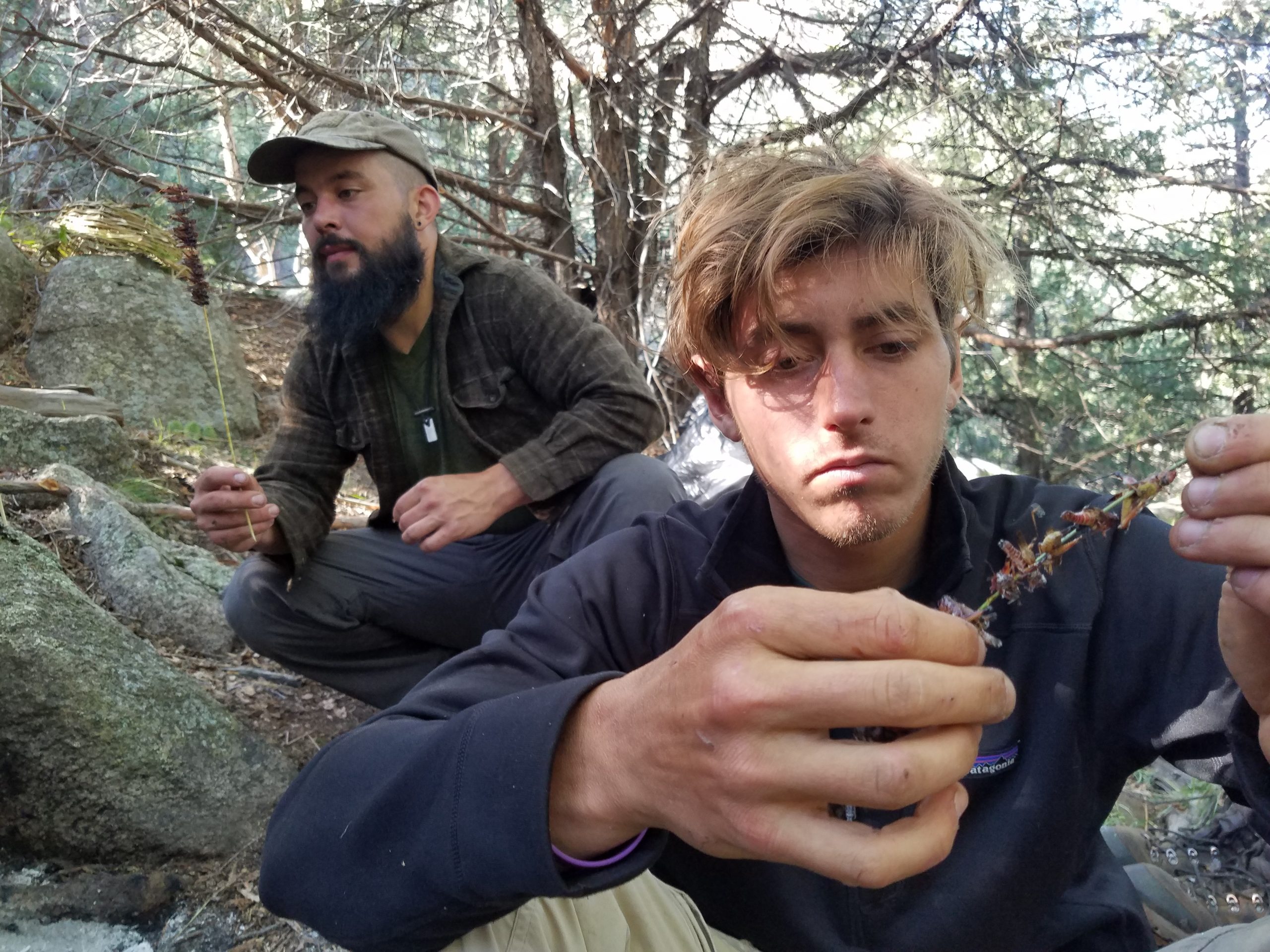
Having a well developed survival mindset can be the difference between living and dying during and after a disaster.
The field of survival psychology is still in its infancy, but there are plenty of proven ways to develop the adaptability, patience, and brainpower needed to overcome the trials from adverse conditions.
Primitive and bushcraft skills help to develop the type of mindset needed to walk out of deadly environments. But knowing the importance of survival psychology and the way fear affects survival chances will help you to develop a survival mindset.
Those who walk out of adverse situations all have an optimistic and adaptable mindset that allows them to maintain a survival attitude.
The Rule of 3s is an important gauge for understanding survival priorities. Humans can typically survive
An important addition to this set is the fact that you will not live 3 seconds without hope.
In other words, the moment you let negative thinking seep in or the moment your calm gives way to panic, you have lost a precious survival resource. No matter the quality and quantity of your food, water, and shelter, it must always be remembered that optimism is the most crucial resource in a survival situation.
The effects of losing hope in a survival situation can literally kill you, which is a phenomenon that has been observed by shipwreck survivors, concentration camp victims, and early Jamestown settlers.
During the Korean war, American POWs coined the term “give-up-itis (GUI)” to describe this deadly descent that comes from a loss of hope.
There are five stages of GUI that occur after a traumatic event produces psychogenic shock:
These symptoms are thought to occur as mental defense mechanisms to insulate a person against the harsh and inconceivable odds that are encountered during survival situations. Since the end result is death, this natural reaction must obviously be avoided.
According to survival psychologist John Leach , “[GUI] is a gradual regression from normal, adaptive goal-directed behaviour,” and, “two things seemed to save the man close to ‘apathy death’: getting him on his feet doing something, no matter how trivial, and getting him interested in some current or future problem.”
Having a rigid mindset after psychogenic shock limits the most important behavioral response in a survival situation: the ability to adapt and cope with new environmental pressures.
The key to long-term survival is establishing new and effective behavioral responses. Leach tells us that “those who perish are frequently observed to be those who are unable to mould themselves psychologically to their new conditions.”
Due to modern technology and search and rescue techniques, contemporary survival situations are rarely prolonged enough to be considered long-term. Therefore, most training courses (rightfully) deal with the short-term considerations of maintaining well-being until rescue occurs.
But in any case, this long-term survival lesson should be remembered: you must always be prepared to adapt to an unexpected environment while having the ability to develop effective coping mechanisms to maintain hope.
It cannot be overstated that a positive mindset is crucial for avoiding give-up-itits. We must always be mindful of our thoughts and emotions when in survival situations.
You cannot allow negative thoughts to hold sway for more than 3 seconds. As soon as that little voice in your head suggests that you can’t or that it’s impossible or that it’s hopeless, you must cultivate optimism and fight back.
You must tell yourself that you are capable, that it is possible, and that you have hope. Negative thinking should be thought about the same way we think about waterborne pathogens, physical injuries, and starvation since a lack of hope is as deadly (if not more so) than these things.
Losing hope is not the only negative emotional response that must be dealt with in a survival situation. We must also learn to understand and control fear.
Fear helps us to not only recognize environmental dangers, but to also respond to them in self preserving ways through a reactionary fight or flight response. These reactions are there to protect us from things like a predatory attack or landslide.
But fear can also hinder our survival chances by overriding rational processing abilities, and this leaves a person in a constant state of reaction that hinders the ability to plan and process information.
Controlling the negative emotional response of fear is just as important as cultivating optimism. Those who control their fear (as opposed to being controlled by it), have greater chances of going home after a traumatic event.
The cognitive capacity to think, plan, and assess are crucial for survival, yet they become restricted when the brain floods the body with adrenaline, cortisol, and other chemical messengers of the fear response.
This chemical cocktail prepares the body to react to trauma in several ways. It thickens the blood, constricts blood vessels, increases the heart rate, and narrows the field of vision (to name a few). It also directs the body to reduce functions that are not needed for flight or fight, such as the immune system.
In other words, fear hijacks the body and mind to prevent normal cognition in the name of reactionary behavior. Therefore, it is important to control the fear response, and one way to do this is by remembering the acronym STOPA:
Fear can help us respond to certain deadly situations, but panic reduces the ability to think and plan. It also produces high levels of stress that cause wear and tear on the body.
A normal fear response creates a stress load that is handled by the body in such a way as to maintain balance, but panic prevents the body from coming back to this normal state of functioning. So it must be avoided at all costs.
It is important to recognize and respond to the presence of fear by naming it and not letting it control your behavior in a survival situation. If panicked, you cannot plan, and if you cannot plan, you will perish.
The threat from panic is especially deadly after falling into frigid water.
The 1-10-1 rule tells us that during the first minute (or two) of cold shock, breathing must be controlled to stop hyperventilation. Not remaining calm means panic, and panic means flailing around, inhaling water, and likely drowning.
The importance of reacting to the body’s cold shock response with higher level cognition in that first minute will allow roughly 10 minutes for self rescue. If self rescue fails, then there is about one hour until hypothermia sets in and eventually unconsciousness. Hence, 1-10-1.
Leach tells us that survival behavior follows a sequence of
Even though we don’t typically consider our day to day lives to be survival situations, we are here today because we have successfully adapted to our environment since birth. This normal mode of existence is called intrinsic survival, and it defines the psychological state of the pre-impact phase.
It is only after the impact that the psyche is forced outside of its adapted environment, and a new environment requires new and often unfamiliar behaviors. This is called extrinsic survival.
The recovery phase occurs during the first three days of a survival situation and cognitive abilities typically remain reduced or paralyzed. Unless the psyche can successfully begin to adapt to its new environment, psychogenic death is most likely to occur during this time.
Leach argues that the term will-to-live is a misguided approach to understanding survival psychology. It is more important to examine the won’t-to-live, or the mental processes that get in the way of mental functioning and lead to death. The mechanisms in the brain that drive give-up-itits and psychogenic death are still poorly understood, but maintaining hope and activity will keep the won’t-to-live at bay.
After the first three days of a survival situation, mental processes start to return to a more normal state. Therefore, it is important to focus on short term survival needs such as food, water, shelter–and of course, optimism–during the first 96 hours of survival.
Long term planning will not only be extremely difficult in these first three days, it will likely be neurologically impossible for most people. Strategies related to rescue (whether they be self-rescue or intensive signal preparation) should only be attempted when mental functions return to a more normal state.
It does not take being stranded in a desert or jungle to see the difference between extrinsic and intrinsic survival.
There was an environmental shift in our society caused by the COVID pandemic. Many Americans initially responded with panic that led to disorganized and inappropriate behaviors, such as hoarding toilet paper and other items. This is a perfect example of why mindset training is important: survival situations don’t always happen in predictable or foreseeable ways.
Besides psychogenic death, there are other neurological malfunctions that can cause a person to become unresponsive to extrinsic survival conditions. One of these malfunctions occurs when stimulus driven actions redirect mental energy from goal oriented tasks.
The lack of ability to maintain a goal oriented structure leads to disorganized and unsuitable behavior, and that will likely result in death. Therefore, it is extremely important to direct goal oriented behavior with a technique called compartmentalization, which will be discussed later in this article.
Another malfunction that occurs during the recovery phase is mental freezing. Leach argues that this behavioral response (or lack thereof) should be considered alongside flight or fight. People apparently freeze because their working memory becomes overloaded with anxiety, and when this happens they are unable to process environmental information or complete goal oriented tasks.
Since an acute neurological stress response is an inevitable consequence of entering the trauma of an extrinsic survival situation, it’s important to train and understand one’s inherent response to stressful situations.
Immersive survival training is specifically designed to simulate extrinsic survival conditions so that cognitive processes can be better understood, strengthened, and preserved.
It does not take a Navy SEAL or SERE graduate to survive a traumatic situation, as shown by the harrowing account of 17 year old Julaine Koepcke.
On Christmas eve of 1971, Koepcke was flying with her family when their plane was struck by lightning. She was ejected and fell two miles into the Preuvuian rainforest while strapped to her seat which, along with the forest canopy, broke her fall. She awoke the next morning with a broken collarbone, some deep cuts, and a displaced ligament in her knee.
For nearly a year-and-a-half before the accident, Koepcke had lived with her parents deep in the jungle. She later recalled that she had “learned a lot about life in the rainforest, that it wasn’t too dangerous. It’s not the green hell that the world always thinks.”
It is likely this intrinsic familiarity with the environment that saved her life since she was all alone, injured, traumatized, and without any gear.
She had heard search planes above the thick canopy and knew that she had to immediately begin traveling to get rescued. For 11 days she hiked along waterways, eventually finding a hut to stay in until she was rescued a day later.
The importance of survival training cannot be overstated. It is the best way to not only understand the stresses of extrinsic survival situations, but training is also the best way to strengthen one’s adaptive responses to such stresses.
Typical survival training ranges from beginner skills courses up to advanced, multi day survival challenges.
It is important to note that the academic aspects of survival psychology already discussed relate to neurological responses of stress, but another extremely important trait of adaptability is a creative mindset.
The bushcraft and primitive skill sets learned in survival courses are useful for not only sustaining physical and mental health in survival situations. These activities can also strengthen one’s creativity and cognitive resilience.
Probably the most important emergency skills that anyone can obtain come from medical training.
Those who frequent the outdoors should have basic first aid knowledge, and beyond that, it is of great communal value for as many people as possible to learn CPR. But medical skills, just like bushcraft skills, are useless if one is overwhelmed by stress and unable to utilize their working memory.
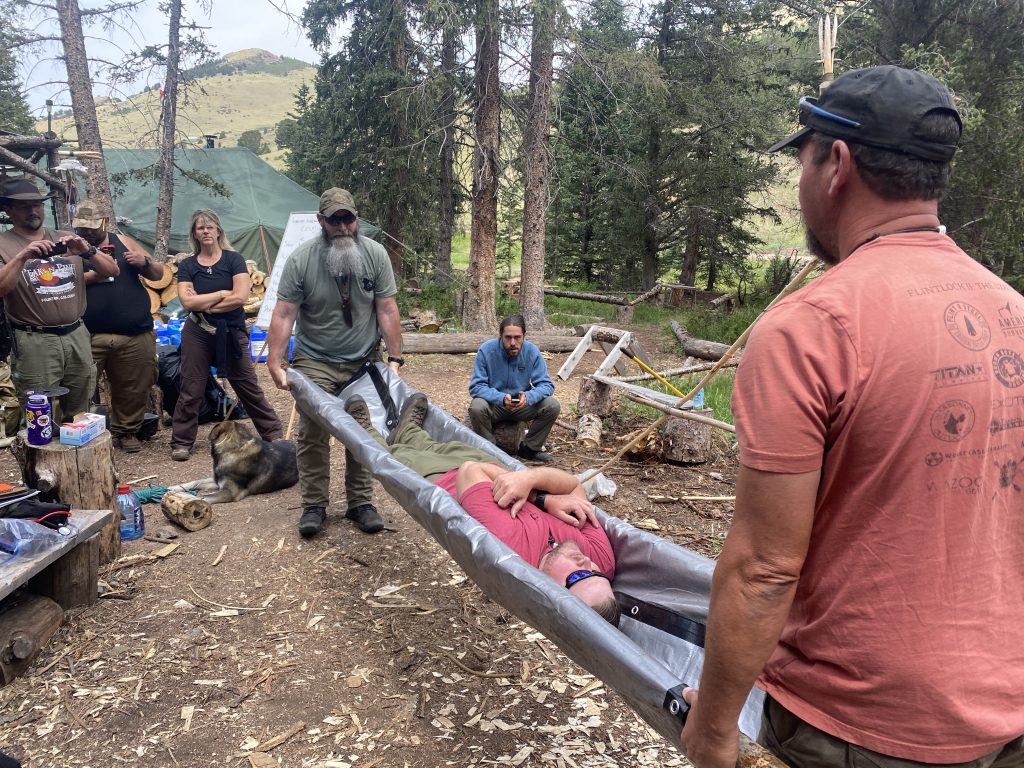
Medical training like Wilderness First Responder courses utilize moulage and roleplay to simulate the stress of traumatic incidents for this reason. In this way, medical training is not only extremely valuable for learning life saving skills, but it is also crucial for strengthening one’s ability to respond successfully to the stress of extrinsic survival situations.
Mental resealancy and handling stress are also strengthened through a regular meditation practice , and visualization is also valuable for dealing with stress.
There are several routes to learn about these things. Yoga classes are great places to train one’s breathing and learn about mediation, but martial arts such as Aikido and Tai-Chi are also valuable for gaining greater control over the mind. Other martial arts such as Jujitsu and Karate are more geared for combat than the ones previously mentioned, but they are still great for building self-awareness.
There are also plenty of nondenominational mediation centers and coaches that can guide one’s meditation and visualization practice.
The practice of prepping has seen a significant rise in popularity since the start of the pandemic, but perhaps the most important preparation one can make relates to maintaining physical health.
Survival situations are inherently grueling because of the combination of the previously discussed effects of stress on cognition and health. But procuring potable water, securing food, and constructing shelter is hard work.
Staying in shape ensures that one’s body is ready for adverse situations, and a regular workout routine should be part of any prepper’s arsenal.
Exercise is also good for neurological health, and it should be obvious to the reader how important this is. The exact mechanisms that improve cognition from exercise are not fully understood, but the increased flow of oxygen and nutrient rich blood to the brain, as well as the boost in creating mitochondria, are thought to have significant contributions. There is also evidence that exercise has long lasting effects on the formation of new brain cells.
The reasons to stay in shape extend beyond survival preparation. Being fit increases quality of life, which can also affect your ability to maintain optimism in adverse conditions.
Besides physical exercise and mediation, there are plenty of other activities that should be practiced to increase mental strength and personal resilience.
Survival situations occur because of some kind of failure, whether it be a plane crash, navigation error, or simply running out of gas in the middle of nowhere. Beyond that, many things can go wrong in the recovery stage either because of poor cognition or just bad luck.
Therefore, it is important to find opportunities in daily life where the chance to fail is high (but the risk from failure is low) so that a callus to hardship can be strengthened.
Another approach is noticing when activities seem too challenging, and approaching them head on because of it. Survival enthusiasts relish the personal satisfaction they gain from challenges that most modern people consider extraordinary, but one does not have to be naked and afraid to gain this elevated sense of accomplishment.
Therefore, budding survivalists must push themselves to embrace failure by finding and approaching challenging situations with an optimistic attitude.
There is a Japanese proverb that should be a mantra for any survivalist: fall down seven times, get up eight times. This simple sentence reflects the impressive resilience of Japanese culture in the face of calamity, and there is much survival wisdom to be learned from that culture.
After the 2011 Tōhoku earthquake and tsunami, many people were left homeless, destitute, and reliant on government relief efforts. A crowd of Japanese people that were waiting for freshwater were told that supplies had run out before many of them were served.
In most countries, this would have resulted in at least vocalized complaints–if not all out riots–but nobody in line even so much as complained.
Western media outlets that were covering the situation were amazed to see that the refugees simply turned around and walked away from the distribution center with impressive calm and composure, and this highlights another crucial aspect of a solid survival mindset; patience.
Practice patience wherever you can, and you will become more adaptable (and more likely to survive) because of it.
Being patient also helps with another important aspect of survival; compartmentalization.
Joe Simpson and Simon Yates were the first people to scale the west face of the nearly 21,000 foot Siula Grande Mountain in the Peruvian Andes in 1985, but the descent became a survival situation after Simpson fell off an ice cliff and severely broke his leg. The climbers were forced to travel in the dark to reach safety, and were separated by 45 meters of rope that Yates eventually had to cut to save his own life after his injured partner was accidentally lowered off of a cliff.
Simpson then fell into a crevasse that was over 70-feet deep.
The injured climber was in a desperate situation, and later recalled that he “wasn’t considering how to survive, just how to get out.” After hours of hopping his way out of the crevasse, he emerged and “sat there giggling manically.”
He could see his partners rope and realized that Yates was likely a very long way down the mountain. Simpson was alone with a shattered leg, very little food, and an eight mile journey to his party’s camp.
The injured mountaineer made it a point to be consciously mindful of his emotional state since he realized the importance of maintaining hope in this situation that he was unlikely to survive. For the next three and a half days, he crawled towards his base camp while his mind easily wandered, causing him to lose track of time.
He later recalled that, “I went, ‘Right, I’m going to get to that crevasse in 20 minutes. Then I’m going to get to that red rock in 20 minutes.’ It created structure and discipline. Sometimes I’d beat the target and I was made up; other times I’d lose and I was pissed off. But it kept me from the big picture of ‘you’re completely fucked.’”
He eventually reached his base camp and rescue, but did not manage to get to a hospital until 11 days after his initial injury.
By setting small, realistic goals, Simpson was able to keep his mind off of the immense pressure of his seemingly impossible circumstances while still being productive–this is the practice of compartmentalization. As discussed earlier, working memory becomes compromised by stress in the recovery stage, and long term planning becomes extremely difficult, if not impossible.
Compartmentalization utilizes short term and stimulus driven thinking to achieve a successive series of goals instead of trying to tackle a huge problem, which can cause severe distress since progress will be assuredly slow.
This technique can be practiced in one’s daily life.
Another technique that should be remembered and incorporated into one’s daily life is the 40% rule.
Navy SEAL David Goggins was asked by billionaire Jesse Itzler to teach him how to maximize his personal potential, and Goggins told him that whenever you think that you’ve reached your limit, you’ve only actually used 40% of your energy reserves.
This is an important rule to remember in survival situations since neurological stress can create fatigue and self-doubt. Of course, it is important to be mindful of caloric intake/ expenditure and other factors of specific situations, but it is good to remember that if you feel like you’ve reached your limit, it means you still have plenty of energy to complete tasks before you truly burnout (the question becomes how will you use that energy wisely?).
The chances that things will go according to plan when in an extrinsic survival situation are slim, therefore it is a good idea to build a flexible and adaptive mindset when it comes to planning.
There is no steadfast rule here since individual lifestyles are inherently different, but making a list of things to learn and then building a plan to accomplish those goals will make you more adaptive. There are many useful skills to consider learning such as amature radio (ham radio), martial arts, survival skills, exercise strategies, etc.
Once you have a list, start setting long term goals and push yourself to complete them, but remember that changing the plan might become necessary, and this should be an opportunity to look forward to. This is also a good way to find motivation through compartmentalization.
Hunting, particularly big game hunting, is a practice that should be pursued to develop an adaptable survival mindset.
Besides the benefit of learning how to procure meat from the wilderness (an obviously important survival skill), hunting is also more ethical and possibly healthier than purchasing meat that was raised on factory farms.
Most hunters will tell you that killing an animal is the relatively easy part; unless one is still-hunting from a fixed location, they will have to stalk their game which requires physical endurance and an intimate knowledge of wilderness conditions. In either case, patience is fundamental and hunting is a great way to cultivate this important aspect of a survival mindset.
After a big game animal is killed, one must be in good enough shape to field dress and haul their meat out, and the hard work required for this also cultivates patience and mental resilience.
It should be clear by now that survival depends more on mindset than anything else, so it makes sense to seek advice from not only contemporary psychology, but also philosophers who have contemplated problems with cognition and attitude. One of the most pragmatic philosophies for building a strong mindset and an acceptance of pain is stoicism.
Stoicism originated in ancient Greece as a holistic interpretation of reality, but after coming to Rome, it morphed into a pragmatic attitude towards life that was less concerned with abstract thought than the Greeks.
One of the most important stoic philosophers was Marcus Aurelius , who was emperor of Rome from 161 until his death in 180.
“Everything that happens is either endurable or not,” the emperor wrote, “If it is endurable, then endure it, stop complaining. If it is unendurable… then stop complaining, your destruction will mean its end as well.”
This attitude of optimistically facing pain and death without complaint is the essence of stoicism, and anyone that wants to prepare themselves to succeed in an extrinsic survival situation should embrace this wisdom (as well as the inevitability of death).
Aurelius also tells us that, “the mind adapts and converts to its own purposes the obstacle of our action. The impediment to the action advances action, what stands in the way becomes the way.” In other words, it is more wise to see obstacles as challenges to be overcome rather than hindrances that impede progress, and this wisdom should be reflected upon if faced with the need to compartmentalize tasks.
Stoicism’s richness extends beyond the writings of Aurelius, and there is much wisdom to be gleaned from other stoics like Epictetus, Seneca the Younger, and Zeno of Citium. But the stoics aren’t the only philosophers that can provide us with survival wisdom.
In the west, yoga is generally considered a form of physical exercise that embraces aspects of Hindu spirituality, but yogic philosophers like Puntanjali show us that the essence of yoga is much more than religion or physical exercise; it is about discipline, acceptance, and knowledge–things that are crucial for survival.
According to Puntanjali, “We will actually be happy to receive pain if we keep in mind its purifying effects. Such acceptance makes the mind steady and strong.”
Yoga is a practice of self-mastery, and it should therefore be pursued by anyone wishing to increase their ability to survive adverse conditions. If the ego gives some reason not to practice yoga, then that is a good opportunity to strengthen the survival mindset by subduing the ego in the name of self-improvement.
Of course, different yoga schools will have different approaches to the practice, but cultivating an open mind will make one more adaptable and likely to survive a survival situation.
Being adaptable prepares us for situations we might typically struggle to cope with by challenging our or normalcy bias, also known as analysis paralysis.
Most people have a tendency to accept things as they are without considering the chances of dramatic change, the effect of which is not only a lack of preparation, but also inappropriate responses to adverse conditions.
As noted earlier, Leach argues that we should consider freezing alongside fight or flight, and it is theorized that this freezing could have an evolutionary basis since predators are less likely to attack someone that is fighting or running from them. But this response is obviously maladaptive in most contexts.
So how do we overcome normalcy bias? Through training and preparation.
The benefits of training to develop a survival mindset will not only be useful in survival situations, but developing adaptability, cognitive resilience, and patience are beneficial for anyone’s normal, everyday life.
Survival training can also help with emotional regulation, controlling fears, and developing self-awareness.
Survivalists know how to rise to challenges with optimism while accepting failure with grace and humility, and having intimate knowledge of one’s strengths and weaknesses can improve relationships, careers, and the general quality of life. Plus, survival training makes all outdoor activities–whether they be hiking, skiing, or hunting–more fulfilling and safe.
Everyone can benefit from survival training, and psychologically preparing for a disaster is crucial for challenging one’s normalcy bias. Even though survival psychology and the effects that survival situations have on cognition is still in its infancy, there are plenty of time tested techniques to increase one’s ability to adapt, innovate, and survive extrinsic survival situations.
Anyone looking to improve themselves for any reason should sign up for a survival class today.
–Survival Psychology by John Leach
–Deep Survival by Laurence Gonzales
–I Had to Survive by Dr. Roberto Canessa and Pablo Vierci
–Touching the Void by Joe Simpson
–Meditations by Marcus Aurilous
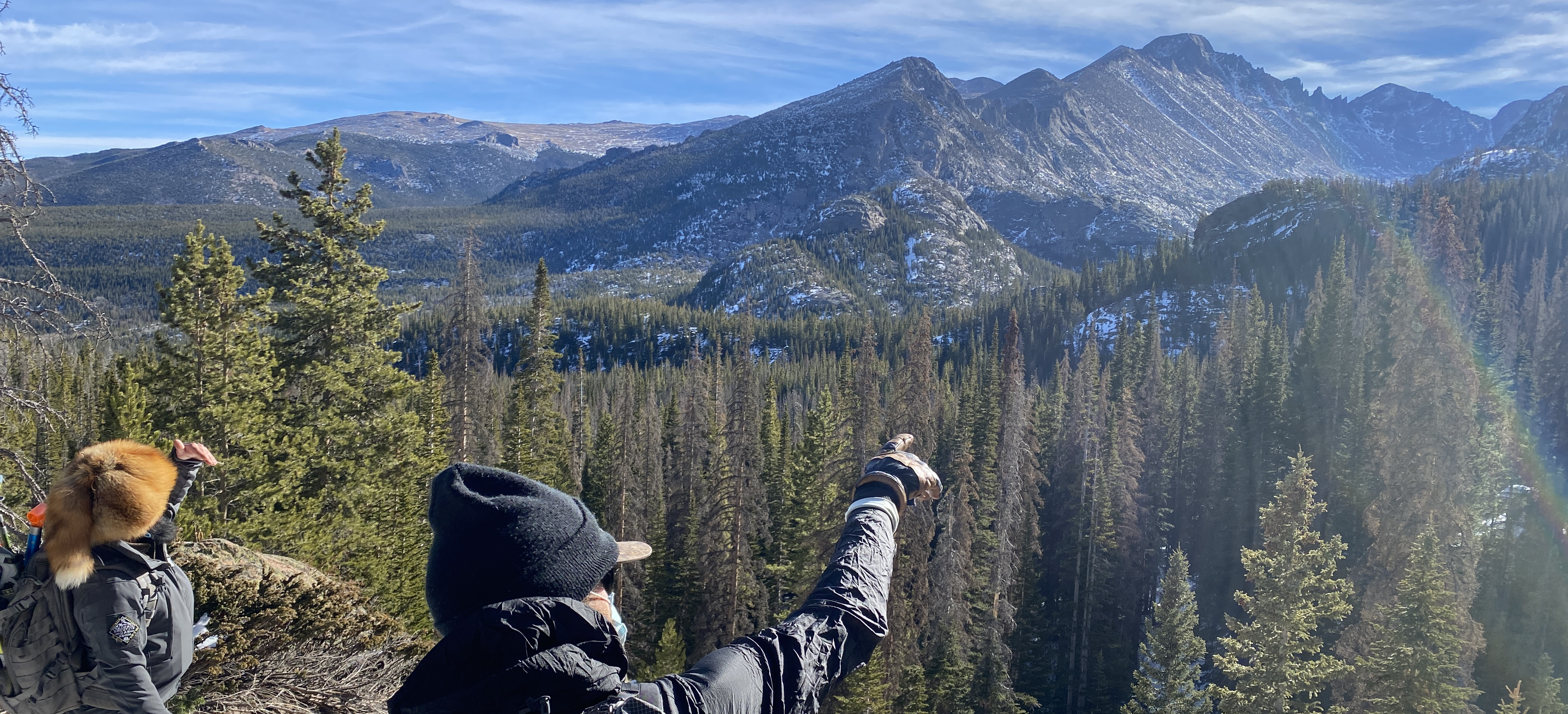
Is all the information we pack into the backwoods as helpful as we think? Colorado is one of the most adventurous states in America. No matter what...
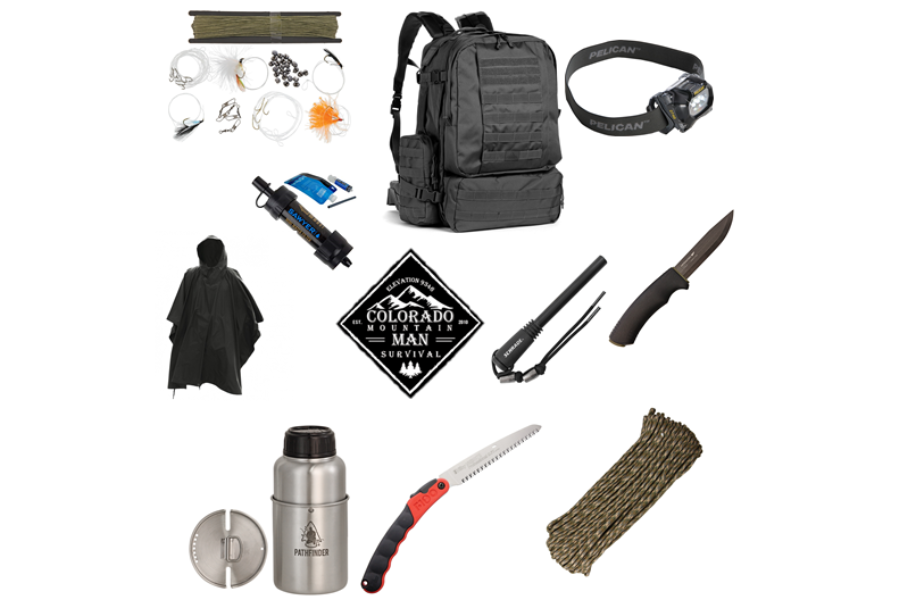
Colorado is a cold weather climate most of the year and with our survival school at 9400 feet, it can get frigid at night, even during the summer....
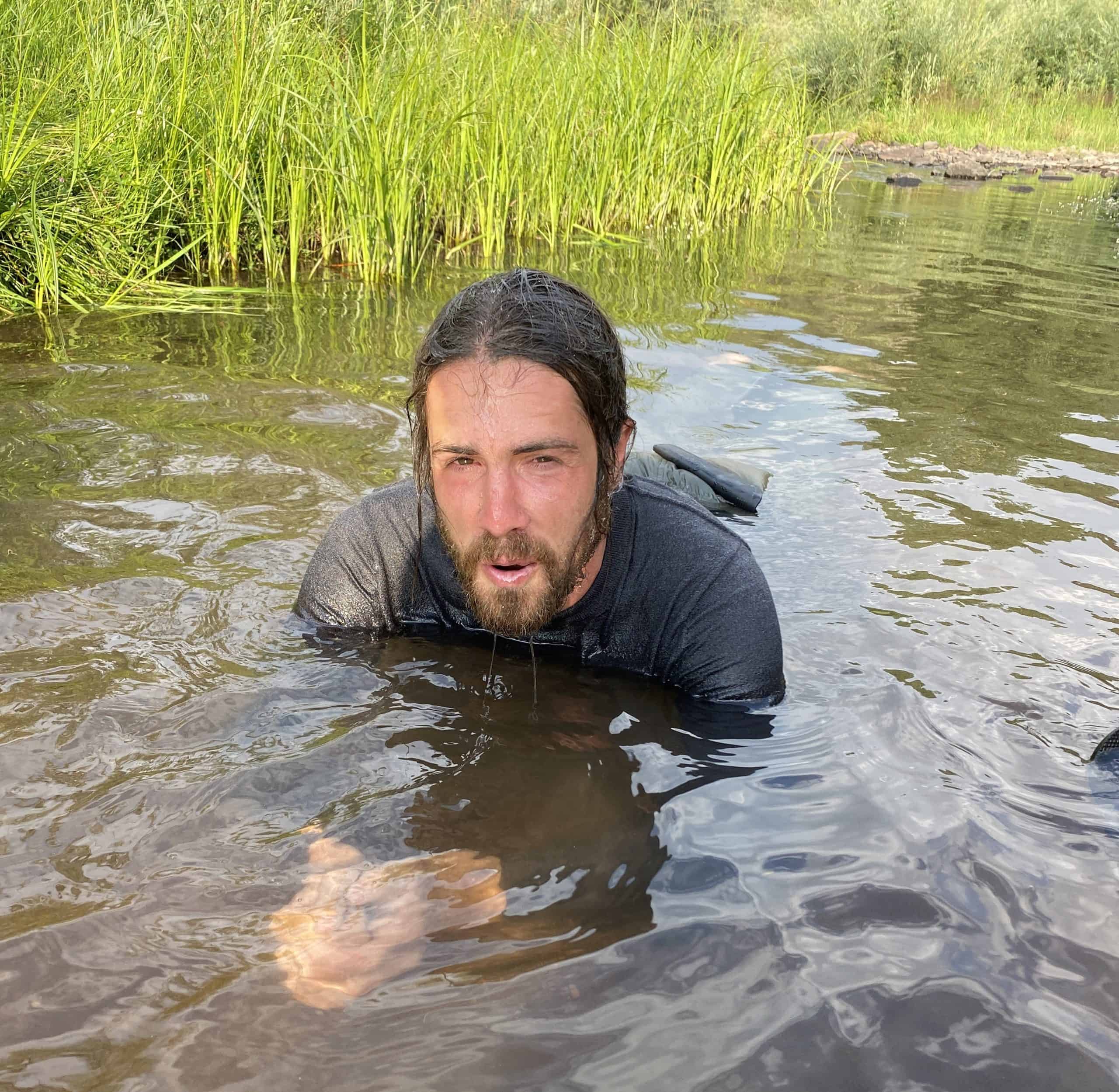
Water is both friend and foe. Even though sips from a cold spring can be refreshing during a hike, being immersed in water can be dangerous for...